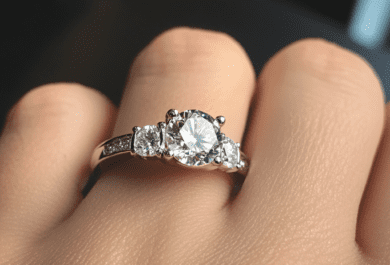Polish is graded the same way as symmetry: Excellent, Very Good, Good, Fair or Poor on a GIA report. AGS add their ‘Ideal’ Polish to the above list. Just as hardwood takes a better polish than softer timbers, diamonds’ hardness makes it the absolute leader in luster.
Poorly polished facets may reduce the intensity of light reflected from, or refracted into and out of a diamond. Labs assess polish by examining the diamond, facet by facet, with reflected and a microscope; you or I may not see any difference. But there is a price difference as was shown in the chart on the Symmetry page.
The visual effect of Good or lower Polish is that you might feel a need to clean the stone. During the GIA observation testing, it was found that observers were less inclined to prefer diamonds with Good and lesser Polish.
Previously the market has read more into Polish (and symmetry) simply because it was part of the only cut grade info on GIA reports.
A common polish defect is surface grain lines. Even the most skilled cutter can encounter variations in hardness or grain, just like in timber, as they polish a facet. The result is a polish line or lines (usually microscopic) running across a facet. These grain lines are very common in pink fancy colored diamonds and sometimes they can be seen with your naked eye in reflected light.
If you choose a diamond with an SI or VS inclusions, a few microscopic polish lines may be of no relevance. But if you were considering buying a Flawless diamond, then Ideal or Excellent Polish could be a consideration.
If the polish is rated as Fair or Poor, visual performance may be noticeably reduced.
Polishing lines. From
3D Diamond Course. Courtesy of OctoNus.
Discuss on the Forum
Fluorescence »











